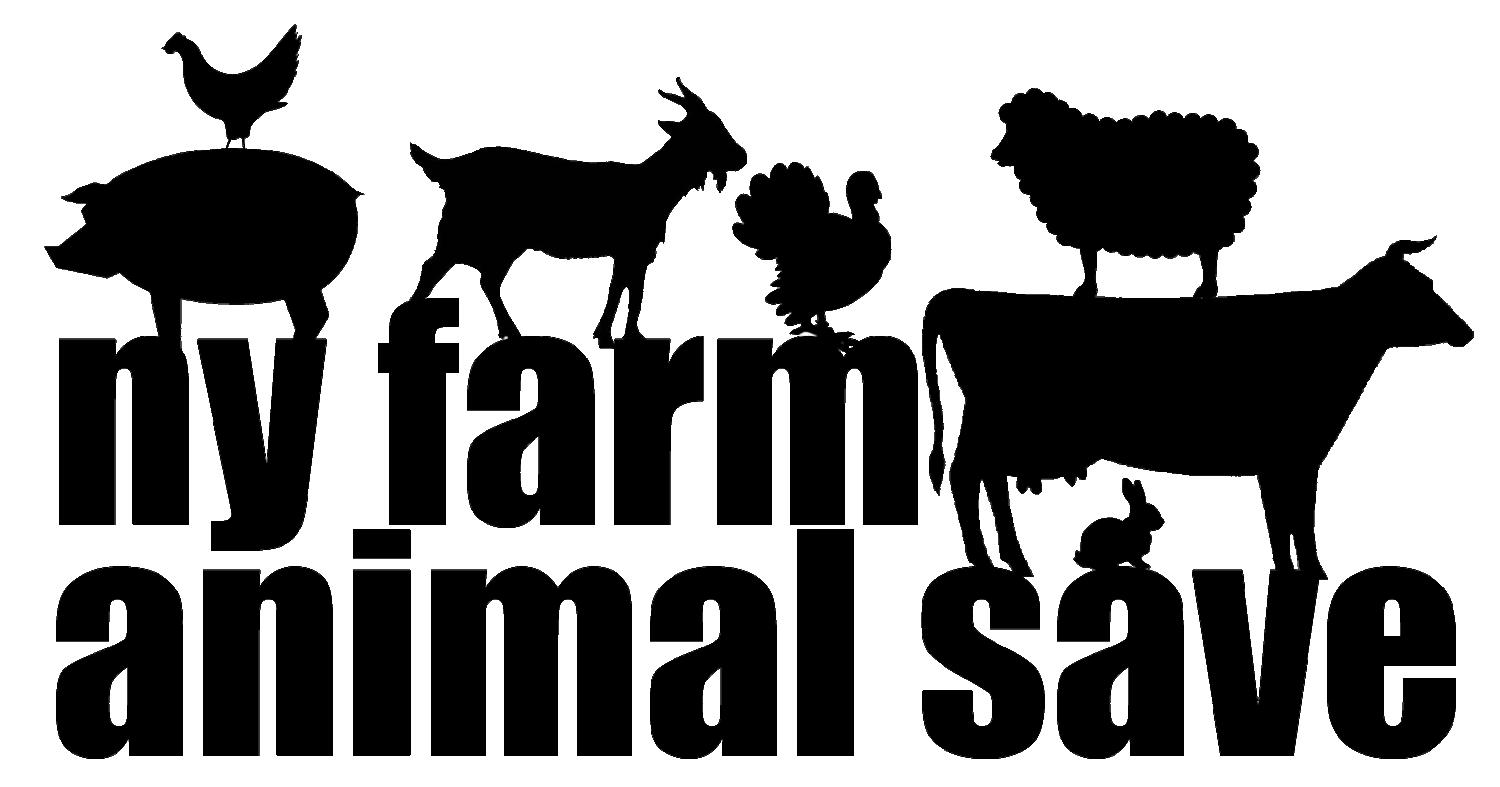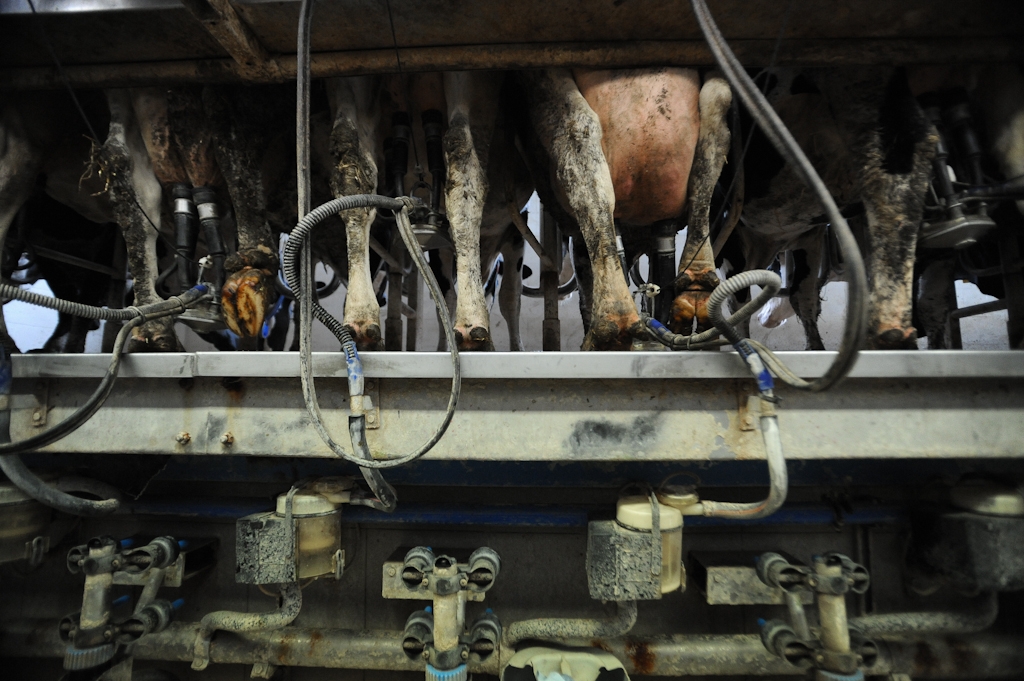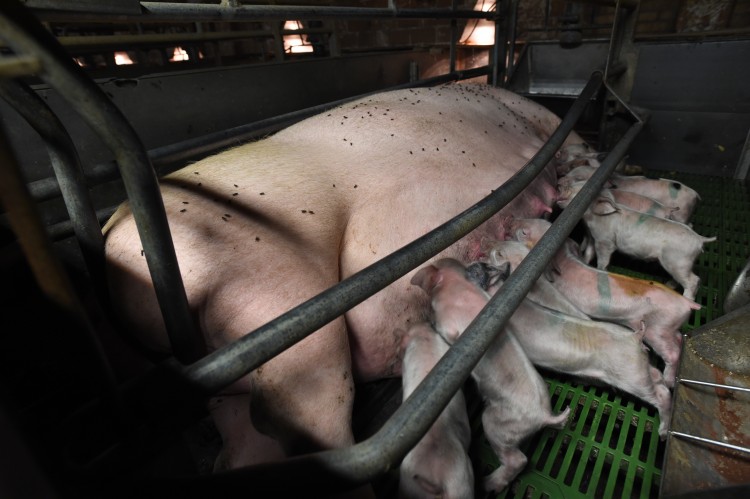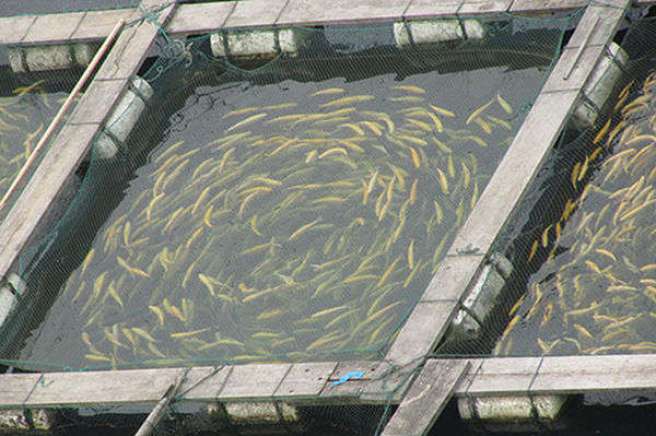For the Animals
The U.S. alone kills over 10 billion land animals each year for food. Each year, ten billion chickens, cows, pigs, sheep, and other innocent, sentient animals are forced to live in filthy windowless sheds, wire cages, gestation crates, veal crates, and other confinement systems in U.S. factory farms. They are then hauled to the slaughterhouse and slaughtered under atrocious conditions. Ten percent never make it to the slaughterhouse, dying from stress-induced diseases, exposure to the elements or injuries.
www.fooducate.com
Cows & Calves
Beef cattle are typically enclosed in feedlots, which pack tens of thousands of animals per unit. Cows have no protection from rain, snow, freezing wind or searing heat. They are castrated, dehorned, and branded with no anesthesia or surgical training.
Jo-Anne McArthur/We Animals
Many dairy cows are now raised in large, mechanized dairies or “dry-lot” dairies, where they have little or no access to pasture. In one type of system, cows are confined to cramped stalls and are usually chained by the neck; in another type of operation, they are crowded into outdoor enclosures where they must continuously stand and lie on feces and urine-caked soil. In order for dairy cows to continuously produce milk, they are artificially inseminated once a year. Many cows are injected with bovine growth hormone to boost milk production to unnaturally high levels, causing infectious udder diseases and additional stress to the animals. Today, the average cow produces more than four times as much milk as cows did in 1950 which causes enormous stress on their bodies.
http://blog.foodassembly.com/2016/04/07/4806/
A cow’s natural lifespan is about 20 years, but cows used by the dairy industry are typically killed after about five years because their bodies wear out from constantly being pregnant or lactating. A dairy-industry study found that by the time they are killed, nearly 50 percent of cows are lame because of standing on concrete flooring and filth in intensive confinement. Cows’ bodies are often turned into soup, food for dogs and cats, or ground beef because they are too “spent” to be used for anything else.
When the cows’ babies are born, they are removed from their mothers almost immediately so humans can drink the milk nature intended for calves. Most of the male calves are auctioned off for beef and slaughtered when they are only one and half years old; others are sold to veal producers, where they are kept chained by the neck in tiny, filthy wood crates to keep their flesh soft and fed a liquid diet to keep their flesh pale. These conditions breed diarrhea, respiratory disease, and anemia. The calves are deprived of natural food, fresh air, and their mothers’ love. After 16 weeks, they are dragged to slaughter and served as veal. Some of the calves who aren’t raised for beef or traditional veal are killed days after they are born and discarded as they are of no use to the dairy industry since they can't produce milk. The premature separation of the cow from her babies causes suffering for both mother and offspring. Many cows search and bellow for their calves for days after they’re removed.
Female calves are also denied their mothers’ affection. Because a dairy cow’s milk is produced to be sold for human consumption, every drop suckled by her calves represents lost profits. For this reason, female calves, too, are separated from their mothers at an early age. Instead of being weaned on their mothers’ milk, they are weaned on a “milk replacer” comprised of beef fat or cattle blood, putting them at risk for Mad Cow disease. Once the females reach maturity, they will be impregnated and replace their mothers on the milk line.
Jo-Anne McArthur / We Animals
Pigs
Breeding sows suffer a similar fate. They are kept constantly impregnated in tiny metal “gestation crates” which allow no room for the sows to walk or turn around. When they are ready to give birth, they are placed in “farrowing crates,” nearly as cramped as gestation crates, where they give birth and nurse their litter of 10-12 piglets. The natural nursing period of 12 weeks is cut to 2-4 weeks, so that the sows can be impregnated again. After 3-4 years, their exhausted bodies are sold for slaughter.
Over 20 percent of the prematurely weaned piglets die of stress and disease. They are the lucky ones. Those who survive are tagged and castrated without anesthesia, then placed in stacked wire cages euphemistically called ‘nurseries.’ Instead of mother’s milk, they are fed a synthetic formula. When the pigs are able to eat solid food, they are transferred to large, crowded pens. Here they are fed for six months until slaughter.
upc-online.org
NY Farm Animal Save
Chickens and Turkeys
300 million turkeys and 9 billion chickens are slaughtered for human consumption each year in the US. These birds represent over 95% of all land animals slaughtered for food. They are crowded into large, dimly lit sheds that hold as many as 30,000 birds. Each bird gets less than a square foot of space. Because they are bred to gain weight quickly, many birds are crippled by their own weight and unable to walk. They are then unable to get to food and water or to defend themselves from the other birds who trample them on the way to the feeding station. Over time, the building fills with the poisonous stench of hydrogen sulfide, ammonia, and methane. After seven weeks, the animals are crammed into plastic cages for transport to slaughter. The chicken industry is aware that a certain percentage of the birds will die prematurely, but they accept this because extreme crowding and quick weight gain increases overall production and boost profits.
farmsanctuary.com
Chickens bred for egg production suffer a different fate. The male chicks are useless to the egg industry, so they are dumped into plastic bags, left to suffocate slowly or ground up for chicken or other animal feed. The females have the tips of their beaks seared off with a hot iron to prevent stress-induced cannibalism. Research indicates that chicks suffer chronic pain for five to six weeks after beak searing. They are crammed 5-7 birds into 20”×24” ‘battery cages,’ stacked on top of one another. The chickens are packed so tightly in these cages that they cannot fully extend their wings. In addition, they must stand on a sloping wire mesh floor, which causes foot and leg problems, while the wire mesh rubs away their feathers and bruises their skin. When the birds are about fifteen months old, their egg production declines, so they are “force-molted”—kept in low lighting and fed a low-calorie diet for seven to 14 days, which stresses their systems, resulting in increased egg production for about six more months. Afterwards, the birds are sent to slaughter.
onegreenplanet.org
Fish
Fish farming or “aquaculture,” has become a billion-dollar industry, and more than 30 percent of all the sea animals consumed each year are now raised on these “farms.” Fish on aquafarms spend their entire lives in cramped, filthy enclosures, and many suffer from parasitic infections, diseases, and debilitating injuries. Conditions on some farms are so horrendous that 40 percent of the fish may die before farmers can kill and package them for food.
Today’s commercial fishers use massive ships the size of football fields and advanced electronic equipment and satellite communications to track fish. These enormous vessels can stay out at sea for as long as six months, storing thousands of tons of fish onboard in massive freezer compartments. Commercial fishers kill hundreds of billions of animals every year—far more than any other industry—and they’ve decimated our ocean ecosystems. In fact, 90 percent of large fish populations have been exterminated in the past 50 years.
Bycatch is the incidental capture of non-target species. Commercial fishing usually uses thousands of miles of nets and lines in the oceans every day. These nets and lines are often undetectable by sight, are extremely strong, and are very efficient at catching the desired fish species in addition to everything else in its path. A staggering amount of marine life—including marine turtles, dolphins, seabirds and juvenile fish—is hauled up with the catch, and then discarded overboard, dead or dying.
NY Farm Animal Save - Toronto, Canada 2013
Transport and Slaughter
Animals are hauled to slaughter for many hours and often days without food or water, while exposed to extreme temperatures. Many die in transit, and those too sick or injured to walk are dragged with chains to the kill floor.
Consumers have no clue about the cruelty they subsidize. At the slaughterhouse, some of the animals are skinned, dismembered, or drowned in scalding water while still conscious. They are then cut into smaller pieces, wrapped in cellophane, and presented at the supermarket counter.
Fish slaughter plants in the U.S. make no effort to stun fish, who are fully conscious when they start down the slaughter line. Their gills are cut, and they are left to bleed to death, convulsing in pain. Large fish, such as salmon, are sometimes bashed on the head with a wooden bat called a “priest,” and many are seriously injured but still alive and suffering when they are cut open. Smaller fish, like trout, are often killed by simply draining water away and leaving them to slowly suffocate or by packing them in ice while they are still fully conscious. Because fish are cold-blooded, allowing them to suffocate on ice prolongs their suffering, leaving them to experience excruciating pain for as long as 15 minutes before they die.
Wildlife
In addition to the ten billion animals killed by animal agriculture each year for human consumption, hundreds of thousands of prairie dogs, coyotes, wolves, mountain lions, bears, bison, and other wild animals are shot, maimed, poisoned, and burned alive by farmers and government agents to keep them from interfering with agricultural operations. Tens of millions of starlings and blackbirds are poisoned each year to keep them from eating animal feed.
An even greater threat to wildlife is posed by the destruction of their habitats. Animal agriculture turns hundreds of acres of forest, wetlands, and other habitats into grazing and croplands to feed farm animals.
Information on this page was obtained from the Farm Animal Rights Movement, PETA and WWF.












